



The CYFIRMA research team has identified a new up-and-coming European threat actor group known as FusionCore. Running Malware-as-a-service, along with the hacker-for- hire operation, they have a wide variety of tools and services that are being offered on their website, making it a one-stop-shop for threat actors looking to purchase cost- effective yet customizable malware. The operators have started a ransomware affiliate program that equips the attackers with the ransomware and affiliate software to manage victims. FusionCore typically provides sellers with a detailed set of instructions for any service or product being sold, enabling individuals with minimal experience to carry out complex attacks.
In this research report, we will discuss previously undiscovered malware being sold by FusionCore, its respective capabilities and the level of sophistication of the threat actors. FusionCore was founded in 2022 by user “Hydra”, the co-developer of the Typhon Reborn stealer. This malware developer has been in the stealer development and logs-selling business for a few years now, initially, being involved with the NoMercy infostealer, along with another associate that goes by the alias; “NecroSys”.
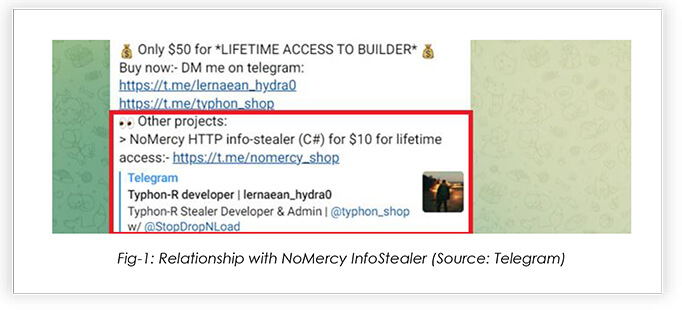
Researchers found the NoMercy stealer to be very crude and basic, and observations indicate that it was at the initial stages of development in early 2022. Based on the feedback from the threat actors, who were using the NoMercy infostealer, Hydra quickly realized that there is a high demand for all kinds of malware, not just infostealers. He decided to build a team that develops custom malware – and named the team FusionCore. Their malware catalogue includes, Typhon-R Stealer, RootFinder Stealer, RootFinder RAT, Cryptonic Crypter, RootFinder Ransomware, RootFinder Miner, Golden Mine, ApolloRAT, SarinLocker and KratoS dropper; with many new malwares already in the pipeline.
The other primary associates of FusionCore include, “NecroSys” (developer of SarinLocker, Typhon Stealer, Kratos Dropper, Ambien RAT), “DanielNusradin” (developer of RootFinder RAT, RootFinder Miner, RootFinder Stealer and RootFinder Ransomware), “InsaniumDev” (the developer of Golden Mine) and “SysKey” (group administrator, malware developer). Given the breadth of the threat actor group’s capabilities, translating into a range of lateral movements, a successful attack could result in significant financial and operational damage, as well as damage to the organization’s reputation among customers, investors, and partners. The CYFIRMA research team was able to obtain a few of the previously undiscovered malware samples being used by FusionCore operators. We will analyze them and share our findings with the community in our upcoming research reports.
FusionCore aliases are highly influenced by Greek and Roman mythology. Hydra named himself after a serpentine water monster Lernaean Hydra (the many-headed serpent who, when one of its heads was cut off, grew two more) in Greek Mythology. The Typhon stealer’s name is based on a monstrous serpentine giant, Typhon in Greek mythology. We have observed a trend within FusionCore’s primary operators to name their flagship malware after Greek mythological creatures. Most of the malware programs developed by FusionCore are written in C++, C# and Go. The operators are using open-source .NET obfuscators such as Obfuscar, NETShield and ConfuserEx to increase the evasiveness of their crypter stub (software that can encrypt, obfuscate, and manipulate malware). The group highly relies on open-source software, with NBMiner and xmrig as part of their tool arsenal to enable cryptocurrency mining.
June 2022
After working on new features and evasion capabilities, Hydra started selling the Typhon-stealer, released on their new telegram channel.
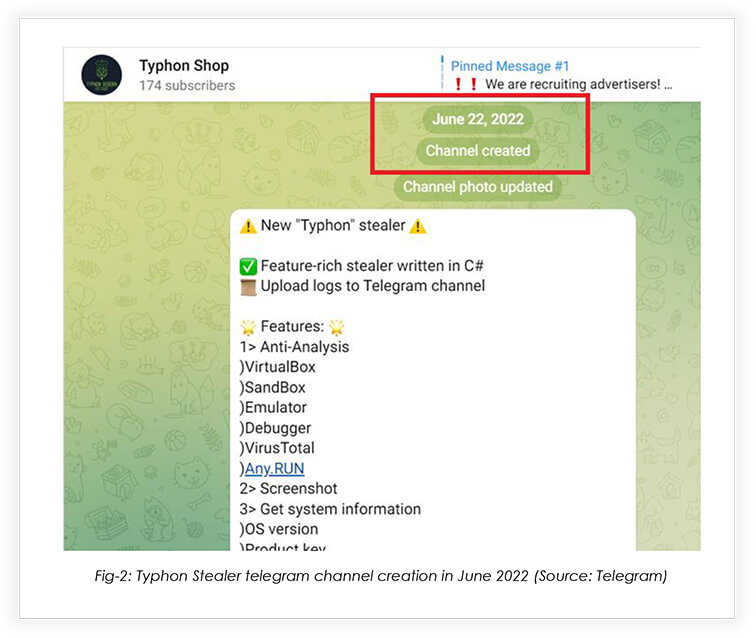
July 2022
Typhon stealer was being updated frequently, based on user feedback.
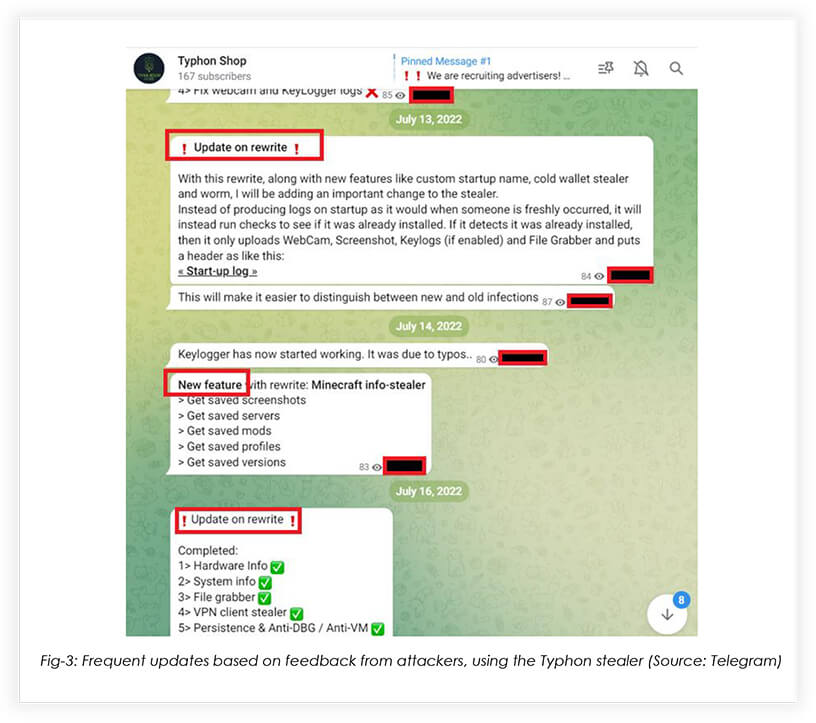
July 2022
The MaaS operators were found to provide malware-spreading services across the globe, indicating that they likely have access to a private botnet, spanned across multiple geographies. The operators were found to charge a higher price, to spread malware within Europe, than any other continent.
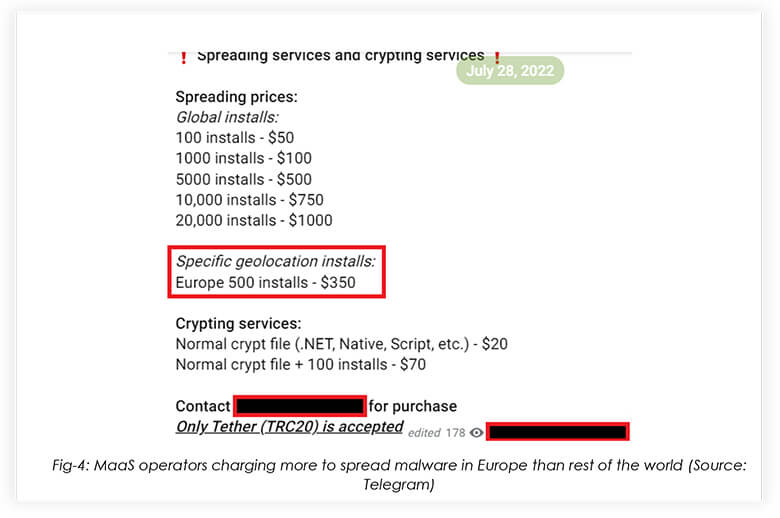
September 2022
FusionCore’s telegram channel was created for streamlining MaaS operations:
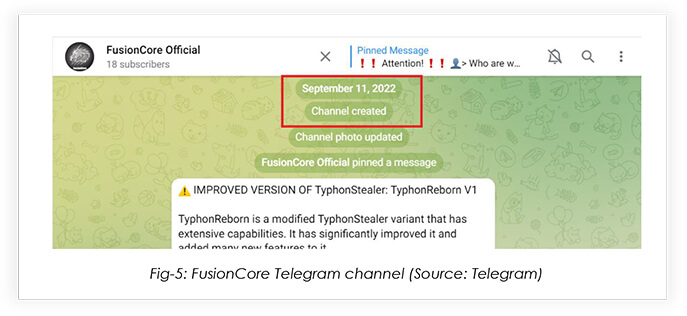
Due to a lack of buyers, Hydra was willing to recruit a Russian-speaking advertiser, who would advertise the products on underground forums, channels, etc. with a 25% commission for the marketer on the revenue.
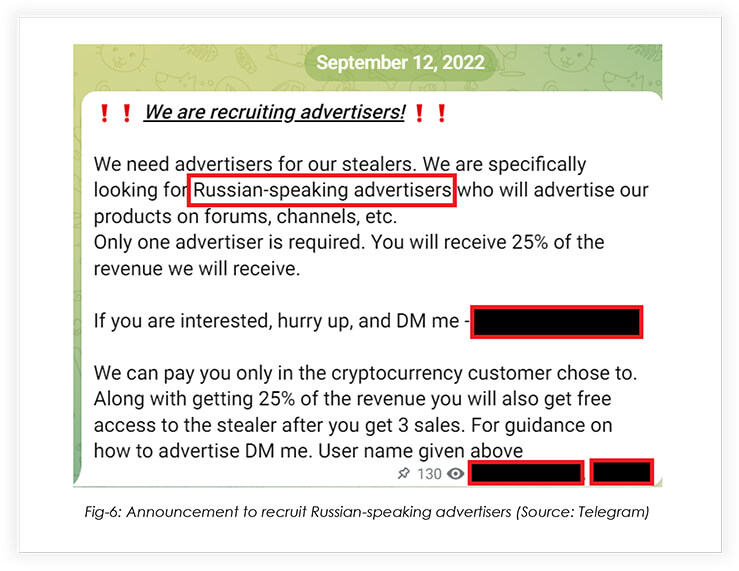
October 2022
Another malware developer in FusionCore that goes by the alias NecroSys came in advertising a soon-to-be-released ransomware written in C#, called SarinLocker.
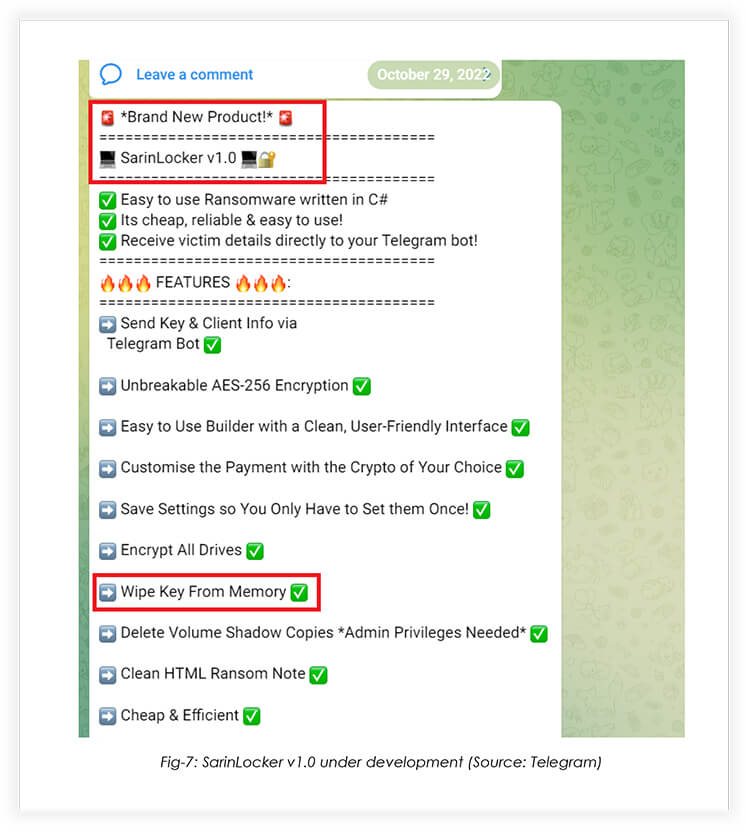
November 2022
The group admin, SysKey announced the official launch of the webshop for FusionCore.
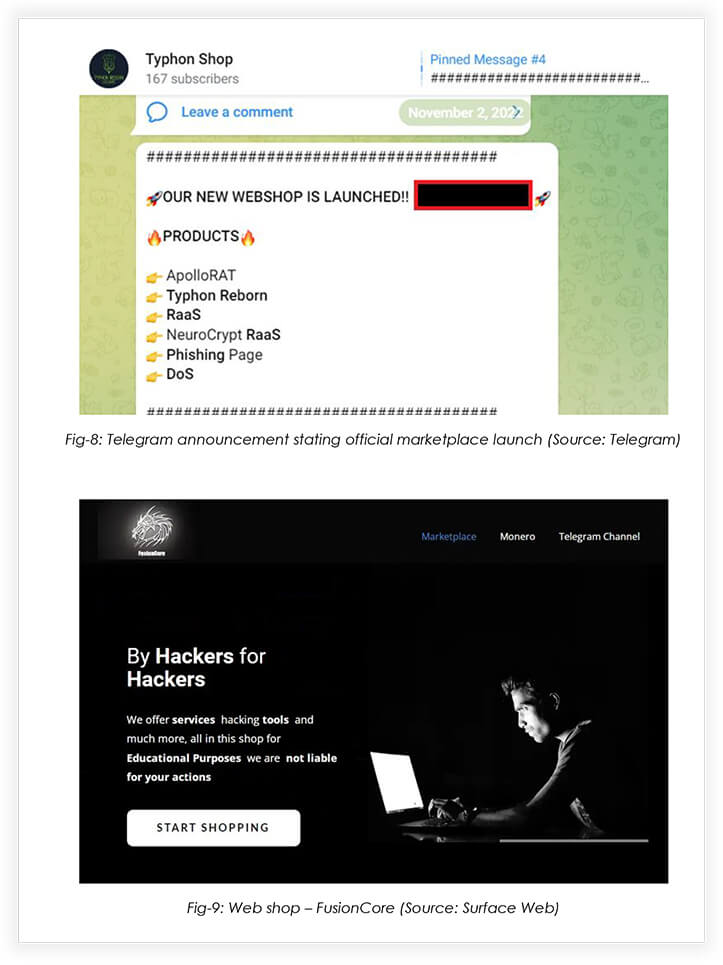
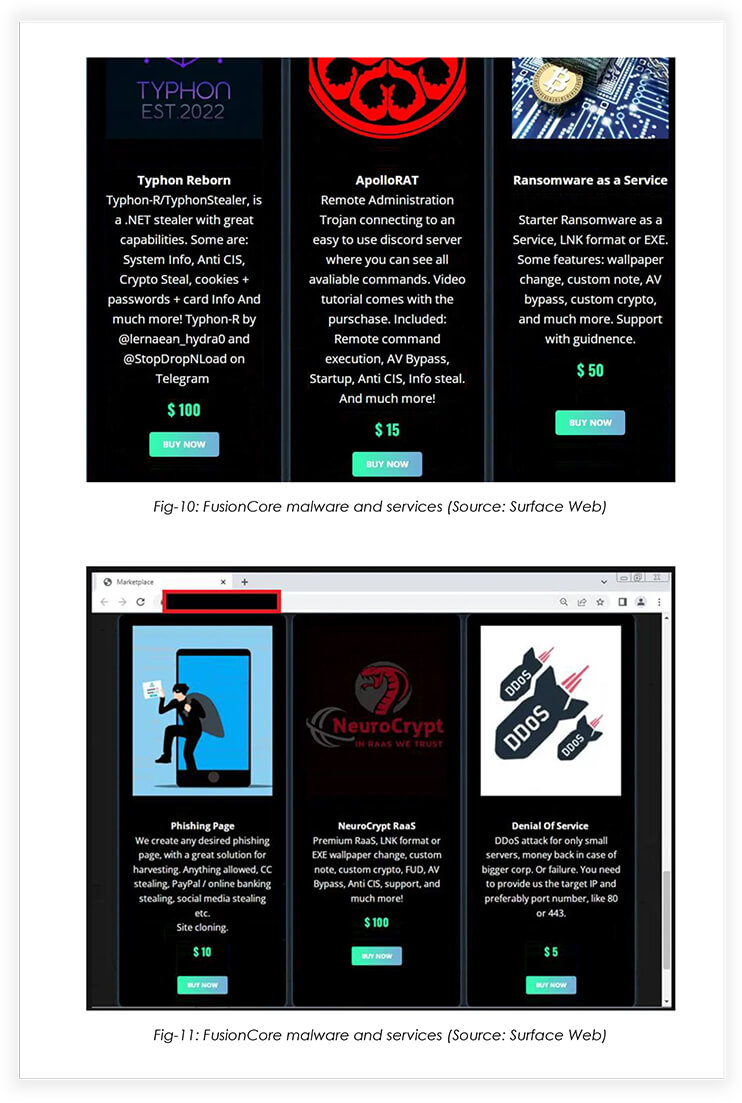
November 2022
The operators released an announcement, regarding the upcoming tools and related features:
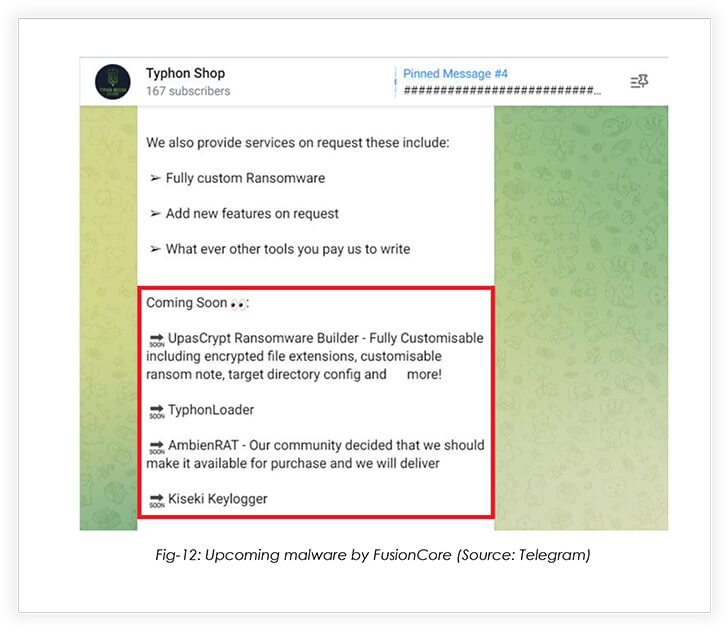
January 2023
The MaaS operators were looking to expand their team with the addition of an experienced malware developer.
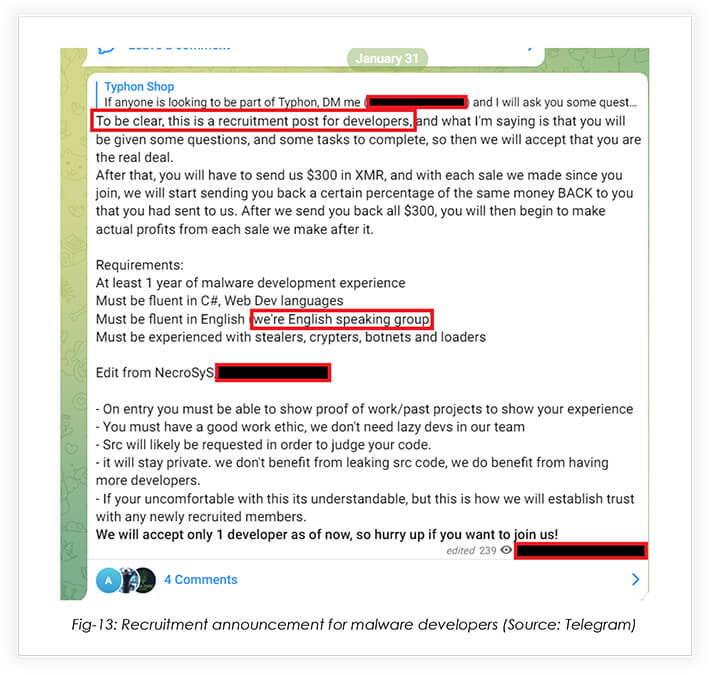
Needless to say, the post gained traction from the malware developers’ community.
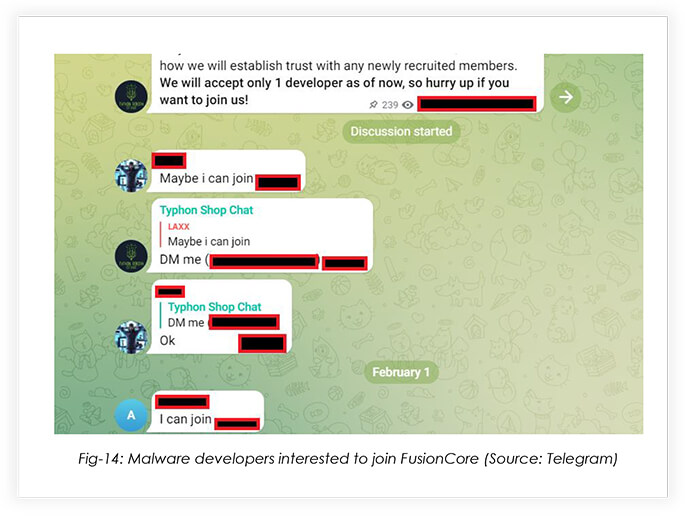
February 2023
Leveraging the poor Operations Security (OpSec) from the MaaS operators, the CYFIRMA research team has obtained the C2 panel snippet, shared by the attacker on 25th February 2023 on their telegram channel (now deleted). The snippet reveals public IPs that are being used by the FusionCore for testing grounds for the malware:
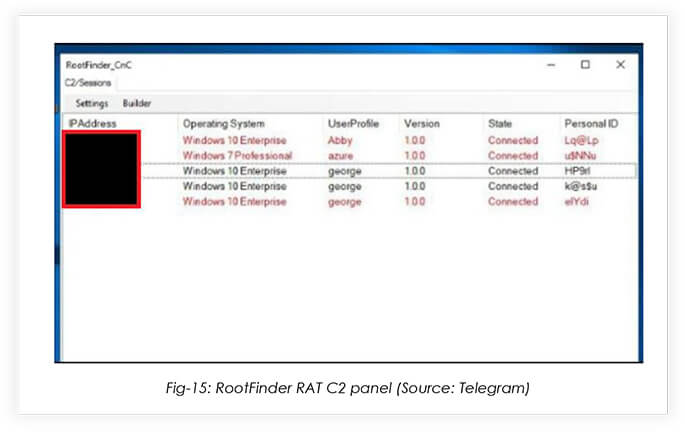
The CYFIRMA research team will continue to monitor the infrastructure, as these are likely part of the botnet that the MaaS operators are using to provide malware- spreading services. The RootFinder telegram channel was deleted shortly, after the threat actors realized the operational error.
March 2023
Hydra shared a screenshot of the Typhon Reborn stealer dashboard (under development). Please take note that the dashboard is set to display Sweden time by default.
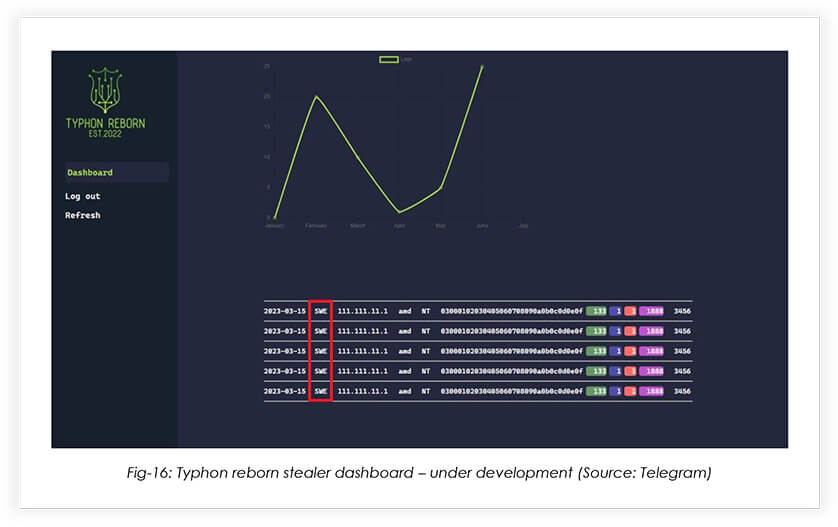
On 26th March 2023, NecroSys made an announcement on the Typhon stealer telegram channel about an upcoming, fully native, and fully undetectable ransomware, named “VIPERA Ransomware”, that is designed to encrypt victim files in microseconds.
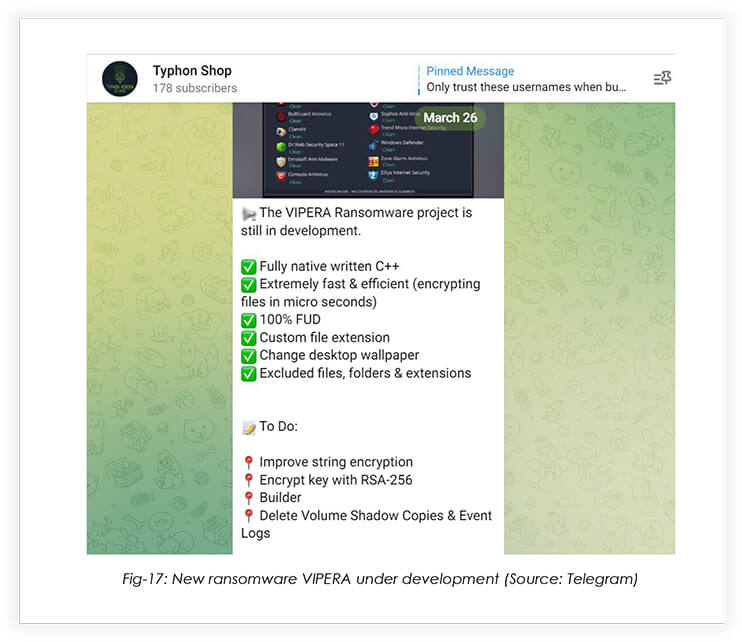
Based on the available information and discussions, it can be ascertained with medium confidence that the operators of FusionCore are operating from Europe. The group acts as both malware developers and threat actors, providing malware subscriptions as well as hacker-for-hire services. Using phishing as their primary attack vector for initial access, FusionCore specializes in a wide range of malware, which makes them capable of carrying out stealthy and persistent attacks.
On 15th November 2022, NecroSys officially announced the release of SarinLocker v1.0, a ransomware which would use telegram for sending decryption keys and client information. It appends an extension SARIN.LOCKED on the encrypted files. The prices were really competitive, compared to other ransomware, as they were charging 20$ for a month, and 100$ for lifetime access.
Please take note that the ransomware has the ability to wipe the decryption key from the infected device’s memory – making it tougher to extract the key, during memory forensics.
The CYFIRMA research team was able to obtain a few of the malware samples, being used by FusionCore operators. We will analyze the obtained FusionCore samples and share our findings with the community in our upcoming research reports. Till then, security teams can find the IOC(s) at the end of this report to block as required.
Admin Panel
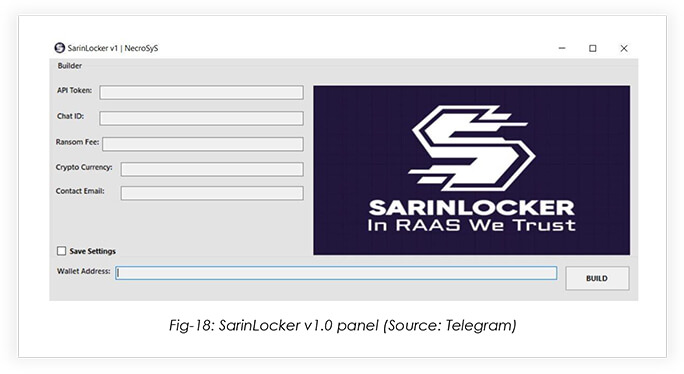
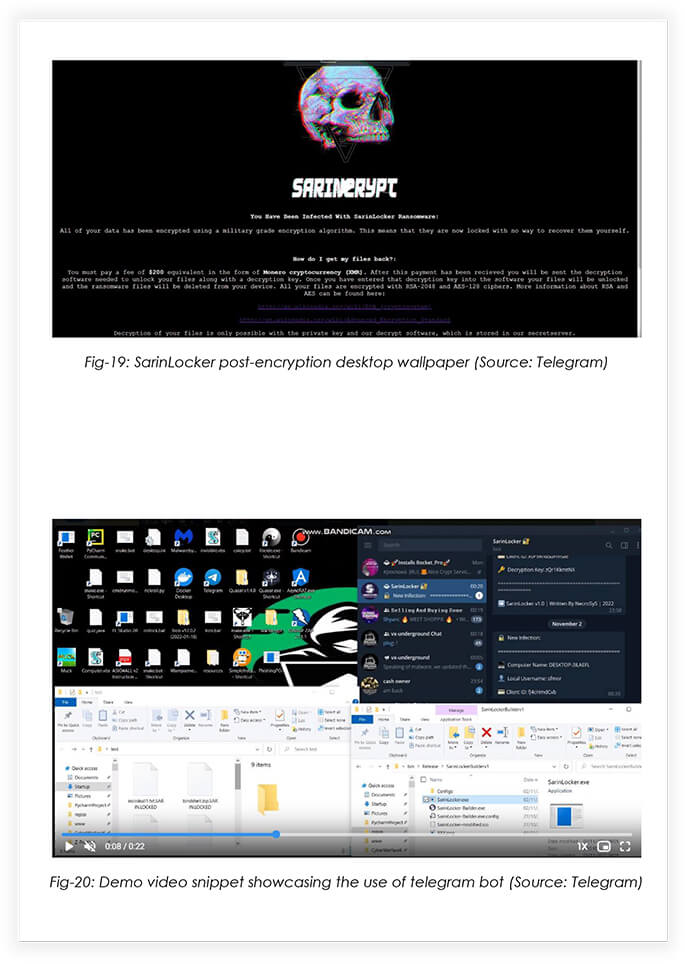
In November 2022, a poll was posted on the Typhon stealer telegram channel, regarding the development of SarinLocker v2.0
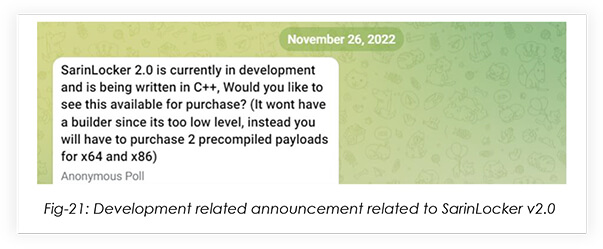
Please take note that the malware developer states that there will be 2 precompiled payloads for x64 and x86 systems.
On 22nd December 2022, NecroSys announced the release of SarinLocker v2.0, which was written in C++. Amongst other changes, the new version would have a longer decryption key for victims, as the decryption key in SarinLocker v1.0 was short and could be brute-forced.
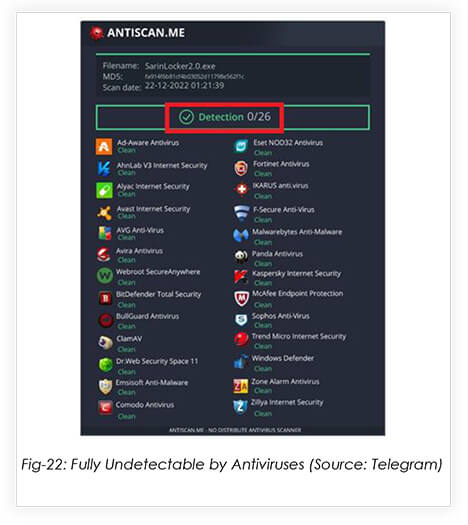
On 14th February 2023, Hydra started advertising a new information stealer, called the RootFinder Stealer on the Typhon Stealer telegram channel.
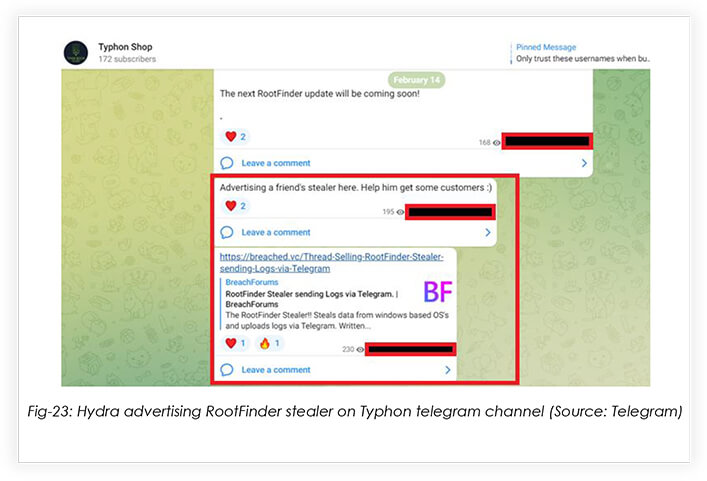
The developer of RootFinder range of malwares (Stealer, RAT, Ransomware, Miner) is using the alias, Daniel Nusradin. We believe that the developer of RootFinder is a novice at this stage and is taking guidance from the more seasoned members of FusionCore on how to develop malware.
It is a variant based on the Redline and Typhon Stealer. The infostealer uses a telegram bot for receiving data from the infected device.
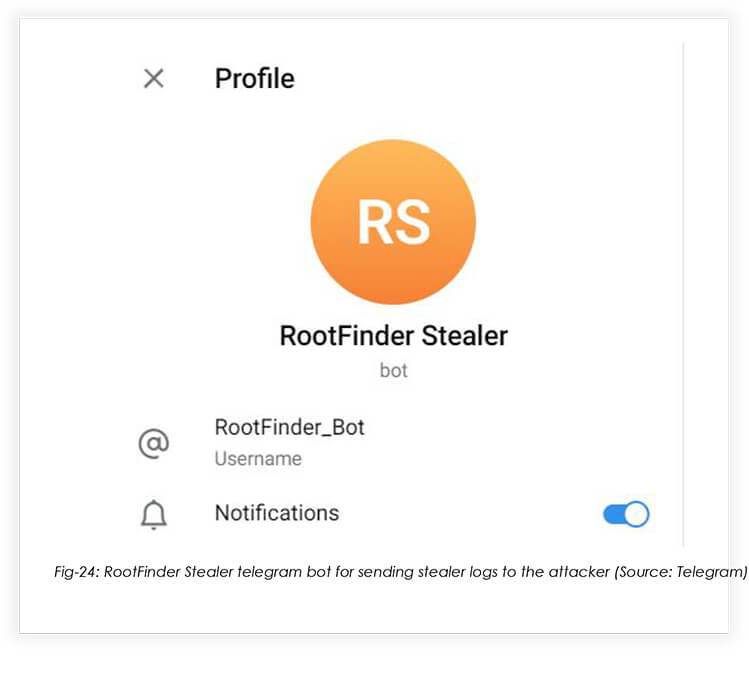
Features:
There’s very limited information about the RootFinder ransomware. The ransomware’s author seems inexperienced, with poor OpSec, so it’s unlikely that the malware will become more sophisticated and widespread anytime soon.
Features:
Cryptonic is a .NET crypter that’s compatible with both .NET and Native Payloads. A crypter is a type of software that can encrypt, obfuscate, and manipulate malware, making it harder to detect by security programs. Cryptonic comes with an easy-to-use builder and each stub is unique. It is not for sale yet as the threat actors have not finished the development. However, anyone who is interested can purchase test crypts, that are being sold for $5 equivalent in XMR or ETH.
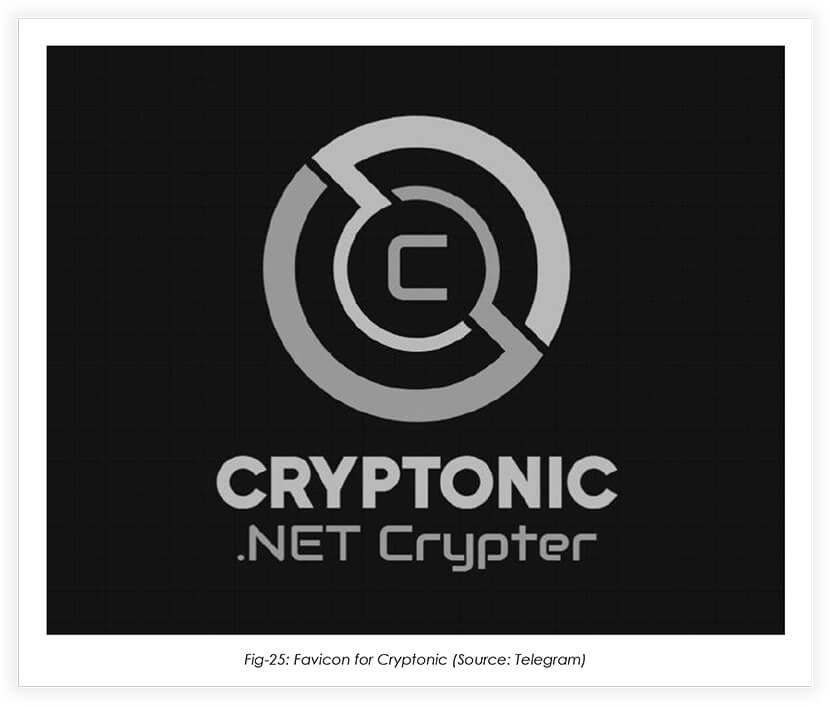
Threat actors can use Cryptonic to make known malware undetectable by Antivirus engines. FusionCore demonstrated this by using Cryptonic on a previously known LockBit 3.0 sample:
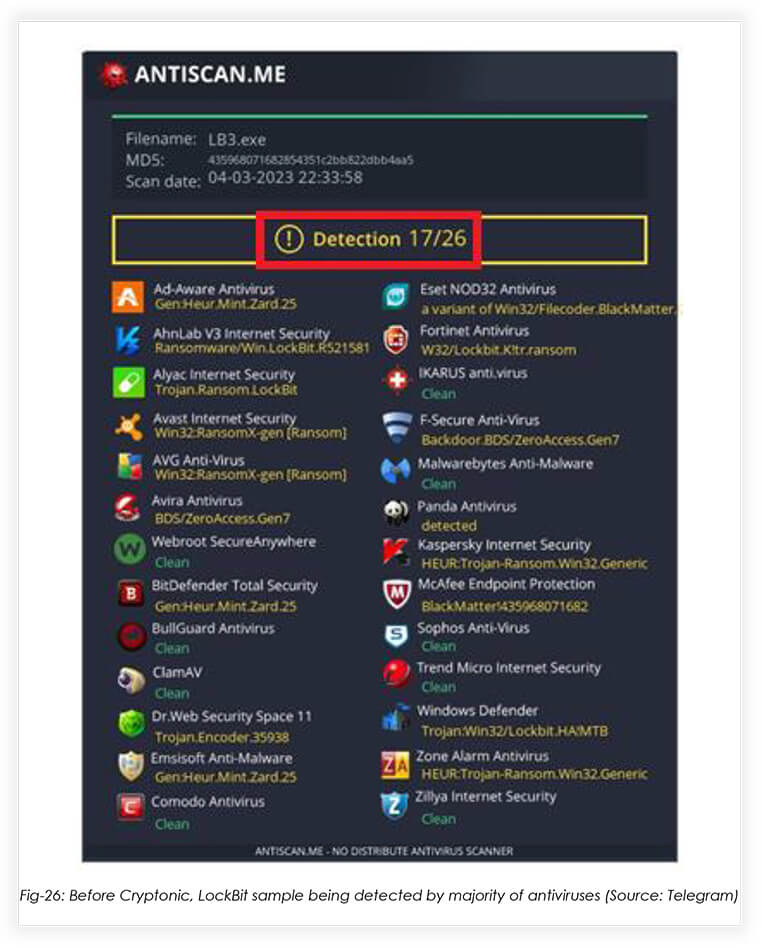
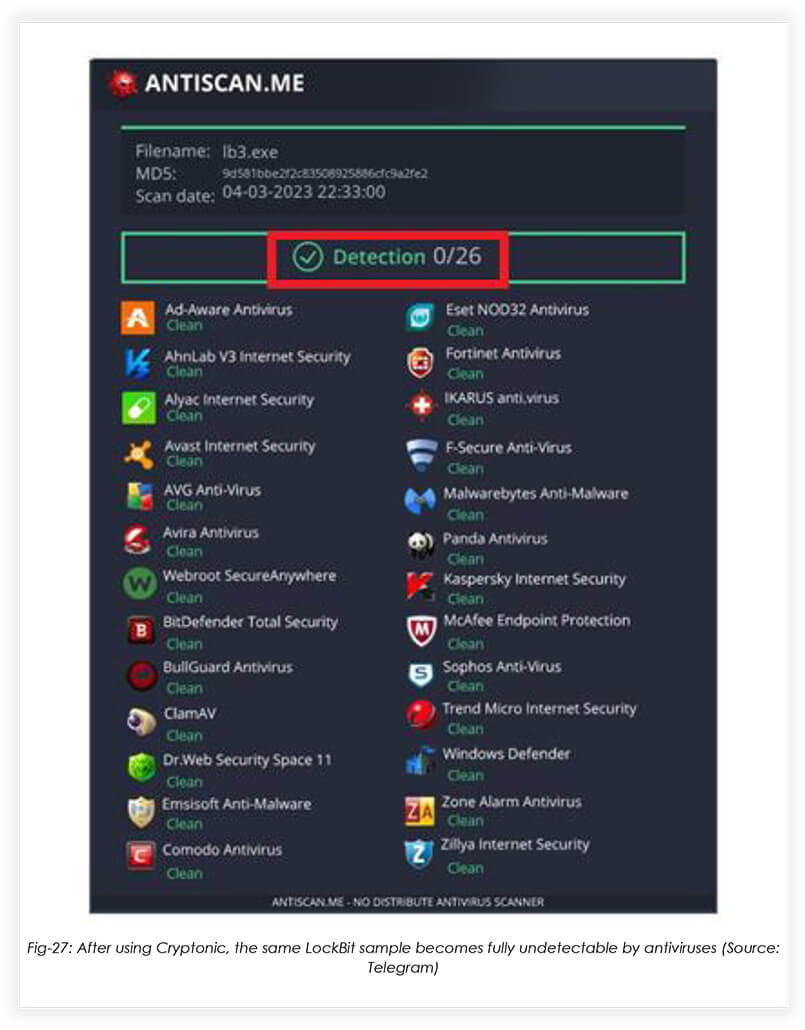
GoldenMine is a cryptocurrency miner written in .NET. The miner is based on open- source tools, named NBMiner and XMRig. It can mine a wide variety of coins such as XMR, ETH, RVN, BEAM, and more, supporting both CPU & GPU mining.
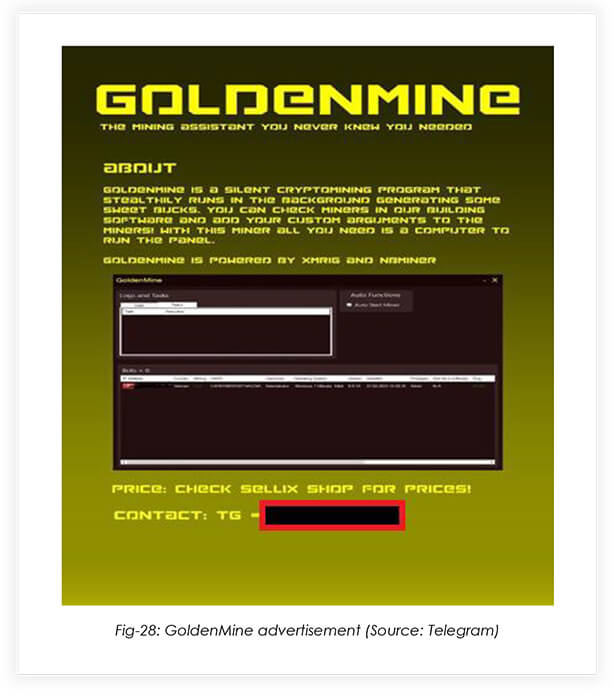
Features:
This infostealer is a relatively new addition to FusionCore’s malware arsenal.
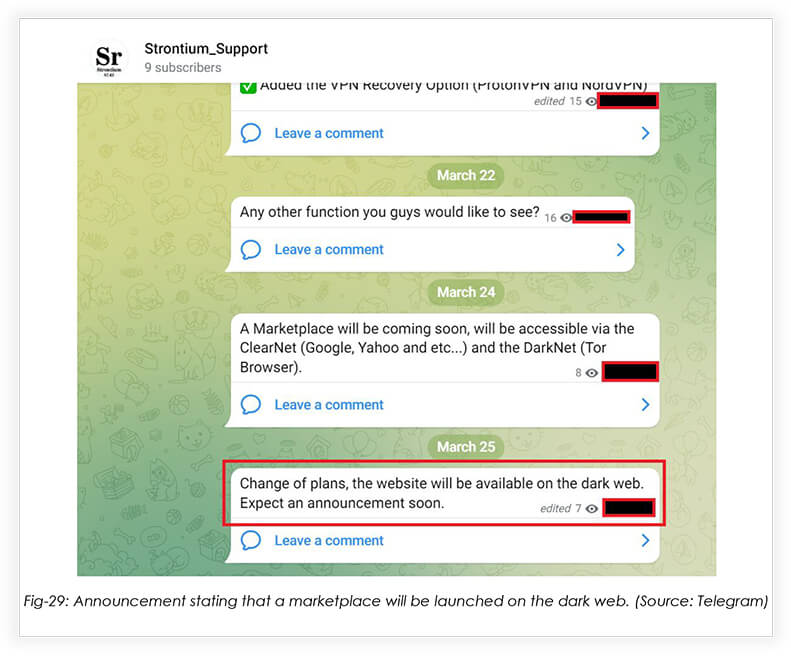
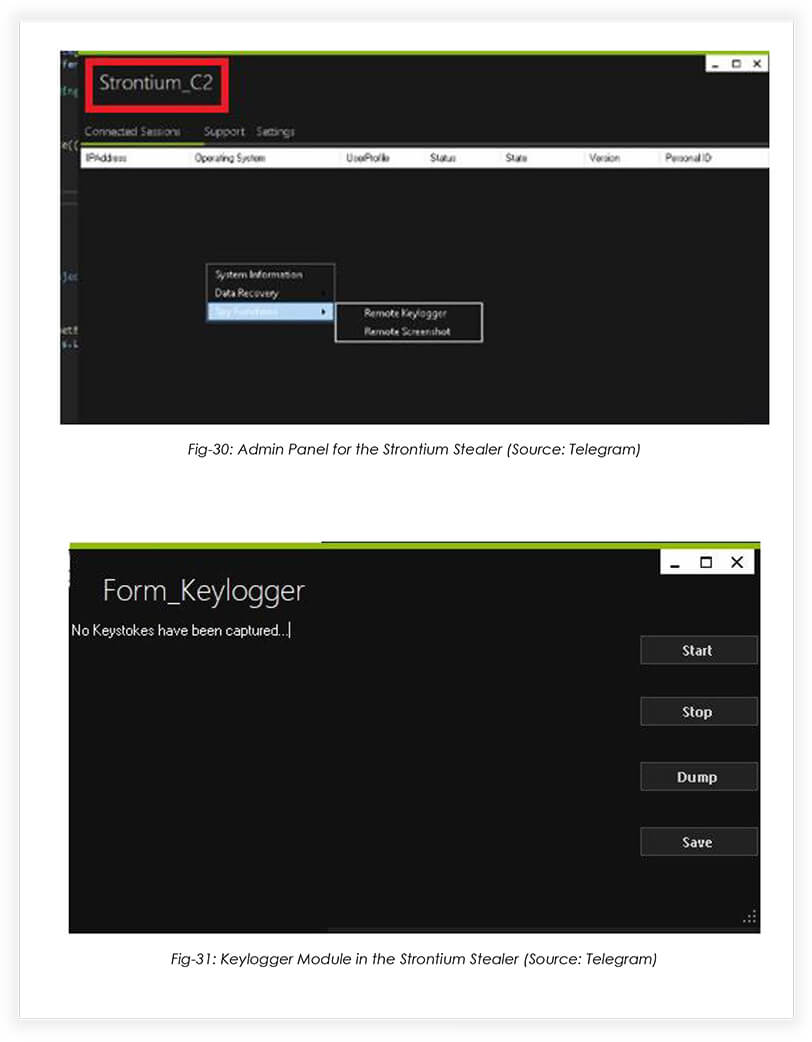
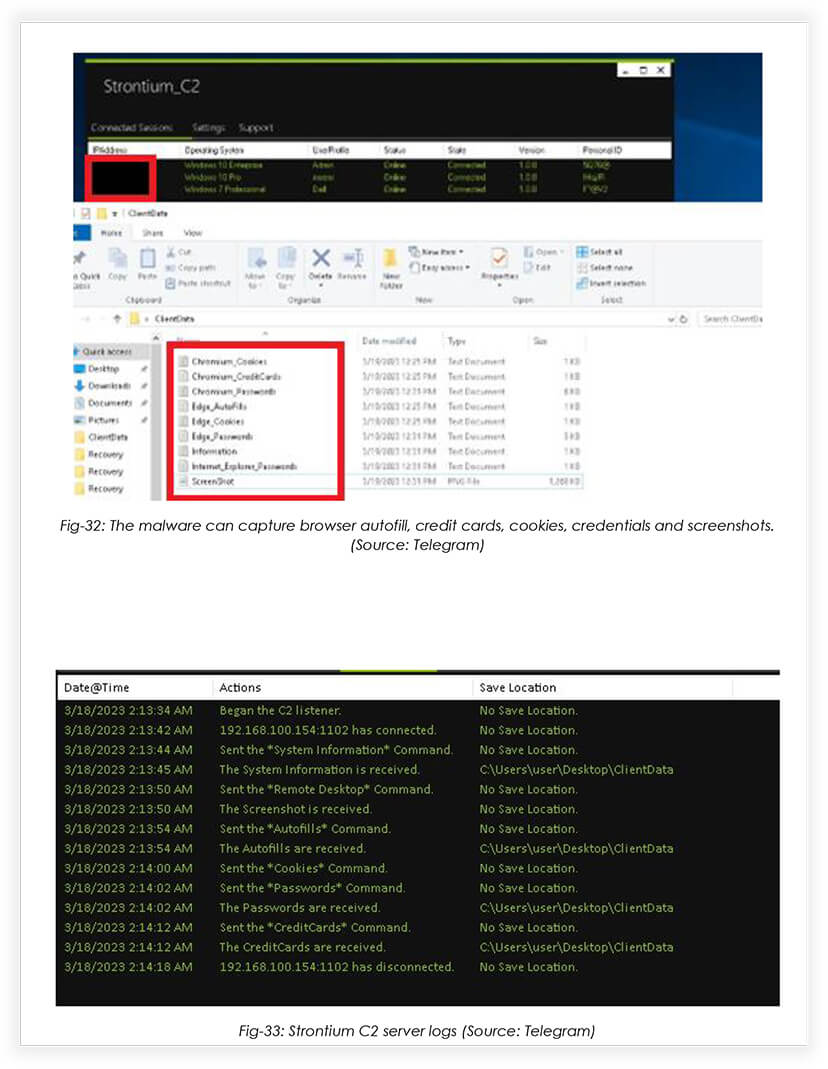
Features:
Threat Actor Profile: The members of FusionCore are young (possibly in their late teens), yet ambitious malware developers who have a wide variety of skills, depending on the type of malware that needs to be built. FusionCore is running a Malware-as-a-service model (MaaS), along with hacker-for-hire services, relying largely upon open-source tools, such as Obfuscar, NETShield, ConfuserEX, for increasing evasiveness in their malware toolkit.
Threat Landscape: FusionCore operators have started an affiliate program, named AnthraXXXLocker, and more affiliates are likely to join the group in the upcoming months. Furthermore, with the addition of new developers, FusionCore is set to enhance its malware arsenal in the coming future, adding to the already booming infostealer business, as well as dipping their toes into the extortion business.
Victimology: The targets of FusionCore would predominantly depend on the buyers and affiliates. Given they are a young up-and-coming group, they are willing to work with anyone, from anywhere. However, so far, the known targets of FusionCore include, Lindesberg Municipality in Sweden, and the Typhon Stealer was observed in a phishing attempt, against an infosec company in Asia Pacific.
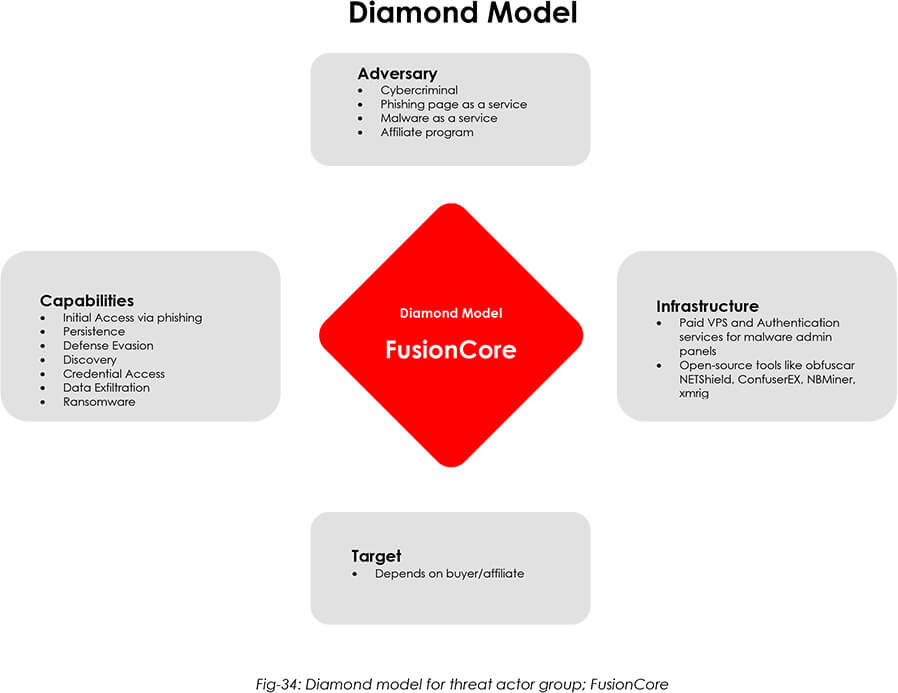
Impact Assessment: The threat actor group’s diverse catalogue of malware presents a multifaceted risk to an organization, with the potential for financial losses due to data theft, operational disruptions caused by ransomware attacks, and reputational damage resulting from breaches of sensitive data.
The group’s hacker-for-hire services and stealer capabilities offer a significant threat to the organization’s digital assets, potentially leading to financial losses, due to stolen intellectual property or compromised customer data.
The use of crypters in FusionCore’s malware suggests a sophisticated approach, increasing the potential impact of their attacks and the difficulty of detecting and mitigating them.
The members of the new FusionCore group are coming up with their own set of malwares, with the help of more seasoned malware developers present in the group. Their developing catalogue of tools suggests they have the ambition to create a suite, covering most, if not all of kill-chain, creating a one-stop shop for threat actors.
Due to the emergence of Malware-as-a-Service (MaaS), cyber-attacks have become more sophisticated than before. With the potential of a single data breach bringing down an entire system, attackers currently have a significant advantage. It is also imperative to have complete visibility onto the attack surface, as security teams cannot protect against what they cannot see.
Indicators Of Compromise (IOCs)
| No. | Indicator | Type | Malware |
| 1 | Fa914f6b81cf4b03052d11798e562f1c | MD5 | SarinLocker v1.0 |
| 2 | 4cdd313daa831401382beac13bea4f00 | MD5 | SarinLocker v1.0 |
| 3 | 856707241a7624681d6a46b2fa279bd56aa6438a | SHA1 | SarinLocker v1.0 |
| 4 | 1a0211f6bc0aab4889364024bd2ec9a3baa56e654d07586bb9c06b0c86f68eaf | SHA256 | SarinLocker v1.0 |
| 5 | 97e4bd269be93b96d8c67c11fadcb75b | MD5 | SarinLocker v2.0 payload (x64) |
| 6 | a5696381cbffc85c0509b2054484b4d4c56697d6 | SHA1 | SarinLocker v2.0 payload (x64) |
| 7 | 563dfc726daaec005638ed3271657aa3e2a2529b7940cd0741d5a47e7e9b9c2c | SHA256 | SarinLocker v2.0 payload (x64) |
| 8 | 10aeadfd910bc5dab9e7d9d88abf5795 | MD5 | SarinLocker v2.0 payload (x86) |
| 9 | d9806de5917acdfa6f5c0c0f83cf7f4b42830e9d | SHA1 | SarinLocker v2.0 payload (x86) |
| 10 | d41d03d804e6ccb7c749c74745df5187618f57b5c58d427d293a40f91a7e9736 | SHA256 | SarinLocker v2.0 payload (x86) |
| 11 | 20.99.160[.]173 | IPv4 | RootFinder RAT |
| 12 | 373bb4e17fbf239f2d02ea3fb3dfa352 | MD5 | RootFinder Stealer |
| 13 | bd93aa67e43350ea3c4833671d68709621a1304d | SHA1 | RootFinder Stealer |
| 14 | 575c5ad5a00e3ce13a75079666adfd254734f9c99555f4edf42ca3fa5d83f6f6 | SHA256 | RootFinder Stealer |
| 15 | 925a12fa388efe3bad829e475ac12bfb | MD5 | Builder |
| 16 | d9f6e37c8f58ac02c5415cab7e49c730 | MD5 | AnthraxxxLocker Ransomware Payload |
| 17 | b7f1a84fcc50733ef535891dc9253c3b3544f81f | SHA1 | Builder |
| 18 | de03afb794e3017d1f6aa657a6ef82ca49c6fd08 | SHA1 | AnthraxxxLocker Ransomware Payload |
| 19 | 05472bedb5a7613310b8088ca89b81e8390d39dddb8ed79dedd7311d2aaa6f80 | SHA256 | Builder |
| 20 | eed648bb9bd45a440b2ceadbbae04e69f9c7f098ab8980c019a6736e4f7bd10b | SHA256 | AnthraxxxLocker Ransomware Payload |
MITRE Mapping
| No. | Tactics | Techniques/Sub- Techniques | Purpose | Used By |
| 1 | Execution TA0002 | Windows Management Instrumentation T1047 | Queries sensitive video device information (via WMI, Win32_VideoController, often done to detect virtual machines) Checks if Antivirus program is installed (via WMI) Queries sensitive processor information (via WMI, Win32_Processor, often done to detect virtual machines) Queries process information (via WMI, Win32_Process) Queries sensitive Operating System Information (via WMI, Win32_ComputerSystem, often done to detect virtual machines) |
Typhon Reborn Stealer, RootFinder Stealer |
| Command and Scripting Interpreter T1059 | Accept command line arguments | Typhon Reborn Stealer, RootFinder Stealer | ||
| Scripting T1064 | Executes batch files | Typhon Reborn Stealer | ||
| 2 | Persistence TA0003 | Registry Run Keys / Startup Folder T1547.001 | Reference startup folder | Typhon Reborn Stealer, RootFinder Stealer |
| 3 | Privilege Escalation TA0004 | Process Injection T1055 | Spawn processes in suspended mode (likely to inject code) | Typhon Reborn Stealer, RootFinder Stealer |
| 4 | Defense Evasion TA0005 | Masquerading T1036 | Creates files inside the user directory | Typhon Reborn Stealer, RootFinder Stealer |
| Process Injection T1055 | Creates a process in suspended mode (likely to inject code) | Typhon Reborn Stealer, RootFinder Stealer | ||
| Scripting T1064 | Executes batch files | Typhon Reborn Stealer | ||
| File Deletion T1070.004 | Drops batch files with force delete using cmd (self deletion) | Typhon Reborn Stealer, RootFinder Stealer, SarinLocker | ||
| Timestomp T1070.006 | Binary contains a suspicious time stamp | Typhon Reborn Stealer | ||
| Virtualization/Sandbo x Evasion T1497 | Queries sensitive device information (via WMI, Win32_VideoController, Win32_Processor, Win32_ComputerSystem often done to detect virtual machines) Contains long sleeps (>= 3 min) May sleep (evasive loops) to hinder dynamic analysis Checks if the current process is being debugged |
Typhon Reborn Stealer, RootFinder Stealer, SarinLocker | ||
| Disable or Modify Tools T1562.001 | Uses netsh to modify the Windows network and firewall settings Creates guard pages, often used to prevent reverse engineering and debugging Uses taskkill to terminate processes |
Typhon Reborn Stealer, RootFinder Stealer, SarinLocker, Strontium | ||
| Obfuscated Files or Information T1027 | Encrypt or decrypt data via BCrypt Encrypt data using DPAPI Encode data using Base64 |
Typhon Reborn Stealer, RootFinder Stealer | ||
| File and Directory Permissions Modification T1222 | Set file attributes | Typhon Reborn Stealer, RootFinder Stealer, SarinLocker | ||
| System Checks T1497.001 | Reference anti-VM strings targeting VirtualBox Reference anti-VM strings targeting VMWare Reference anti-VM strings Reference anti-VM strings targeting Xen |
Typhon Reborn Stealer, RootFinder Stealer, SarinLocker | ||
| Reflective Code Loading T1620 | Load .NET assembly | Typhon Reborn Stealer, RootFinder Stealer, RootFinder Miner, RootFinder RAT, RootFinder Ransomware, Cryptonic | ||
| 5 | Credential Access TA0006 | OS Credential Dumping T1003 | Tries to harvest and steal browser information artifacts | Typhon Reborn Stealer, RootFinder Stealer |
| Input Capture T1056 | Creates a DirectInput object (often for capturing keystrokes) | Typhon Reborn Stealer, RootFinder Stealer, RootFinder RAT, Strontium | ||
| 6 | Discovery TA0007 | Application Window Discovery T1010 | Sample monitors Window changes (e.g., starting applications) | Typhon Reborn Stealer, RootFinder Stealer, RootFinder RAT |
| Query Registry T1012 | Monitors certain registry keys / values for changes (often done to protect auto-start functionality) | Typhon Reborn Stealer, RootFinder Stealer, RootFinder RAT, Strontium, SarinLocker | ||
| System Network Configuration Discovery T1016 | Checks the IP addresses of the machine | Typhon Reborn Stealer, RootFinder Stealer, RootFinder RAT, Strontium, SarinLocker | ||
| Remote System Discovery T1018 | Reads the hosts file | Typhon Reborn Stealer, RootFinder Stealer | ||
| Process Discovery T1057 | Queries a list of all running processes | Typhon Reborn Stealer, RootFinder Stealer, RootFinder RAT, Strontium, SarinLocker | ||
| System Information Discovery T1082 | Queries information about the installed CPU (vendor, model number etc.) Queries the volume information (name, serial number etc.) of a device Queries the cryptographic machine GUID Reads software policies Queries process information (via WMI, Win32_Process) Queries sensitive Operating System Information (via WMI, Win32_ComputerSystem, often done to detect virtual machines) |
Typhon Reborn Stealer, RootFinder Stealer, RootFinder RAT, Strontium, SarinLocker, RootFinder Miner, Cryptonic, Golden Mine | ||
| File and Directory Discovery T1083 | Reads ini files | Typhon Reborn Stealer, RootFinder Stealer, RootFinder RAT, RootFinder Ransomware, SarinLocker | ||
| Security Software Discovery T1518.001 | Checks if Antivirus program is installed (via WMI) AV process strings found (often used to terminate AV products) May try to detect the virtual machine to hinder analysis (VM artifact strings found in memory) |
Typhon Reborn Stealer, RootFinder Stealer, RootFinder RAT, Strontium, SarinLocker, RootFinder Miner, Cryptonic, Golden Mine | ||
| System Location Discovery T1614 | Get geographical location | Typhon Reborn Stealer, RootFinder Stealer, RootFinder RAT, Strontium, SarinLocker, RootFinder Miner, Cryptonic, Golden Mine | ||
| 7 | Collection TA0009 | Data from Local System T1005 | Tries to harvest and steal browser information (history, passwords, etc.) | Typhon Reborn Stealer, RootFinder Stealer, Strontium |
| Input Capture T1056 | Creates a DirectInput object (often for capturing keystrokes) | Typhon Reborn Stealer, RootFinder Stealer, Strontium | ||
| Data from Information Repositories T1213 | Reference WMI statements | Typhon Reborn Stealer, RootFinder Stealer | ||
| Archive Collected Data T1560 | .NET source code contains calls to encryption/decryption functions | RootFinder Stealer, RootFinder RAT, RootFinder Ransomware, Typhon Reborn Stealer | ||
| 8 | Exfiltration TA0010 | Exfiltration Over Web Service/Exfiltration to Cloud Storage T1567.002 | Exfiltrates data using Telegram API | Typhon Reborn Stealer, RootFinder Stealer, SarinLocker |
| 9 | Command and Control TA0011 | Application Layer Protocol T1071 | Uses HTTPS Performs DNS lookups Downloads files from webservers via HTTP |
Typhon Reborn Stealer, RootFinder Stealer, RootFinder Miner, Golden Mine, Strontium, SarinLocker, RootFinder RAT |
| Web Service T1102 | Connects to an online service (for C&C) | Typhon Reborn Stealer, RootFinder Stealer, RootFinder Miner, Golden Mine, Strontium, SarinLocker, RootFinder RAT | ||
| Encrypted Channel T1573 | Uses HTTPS Uses HTTPS for network communication |
Typhon Reborn Stealer, RootFinder Stealer, RootFinder Miner, Golden Mine, Strontium, SarinLocker, RootFinder RAT | ||
| 10 | Impact TA0040 | Resource Hijacking T1496 | Mine cryptocurrency | Typhon Reborn Stealer, RootFinder Stealer, RootFinder Miner, Golden Mine |
| Data Encrypted for Impact T1486 | Modifies user documents; Writes a notice file (html or text) to demand a ransom | SarinLocker, RootFinder Ransomware | ||
| Inhibit System Recovery T1490 | Deletes volume shadow copies | SarinLocker |
RootFinder Stealer
title: Suspicious Network Command
description: Adversaries may look for details about the network configuration and settings of systems they access or through information discovery of remote systems
tags:
– attack.discovery
– attack.t1016
logsource:
category: process_creation
product: windows
detection:
selection:
CommandLine|contains:
– ‘ipconfig /all’
– ‘netsh interface show interface’ – ‘arp -a’
– ‘nbtstat -n’
– ‘net config’
– ‘route print’
condition: selection
level: low